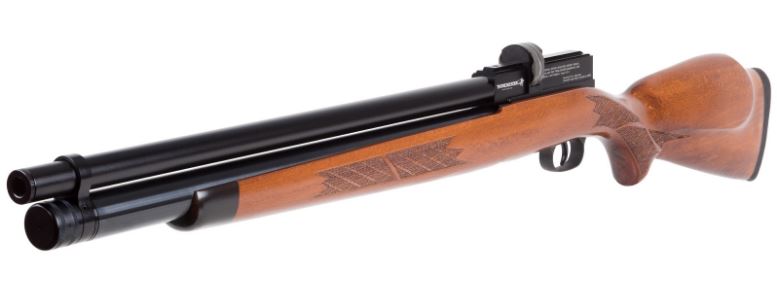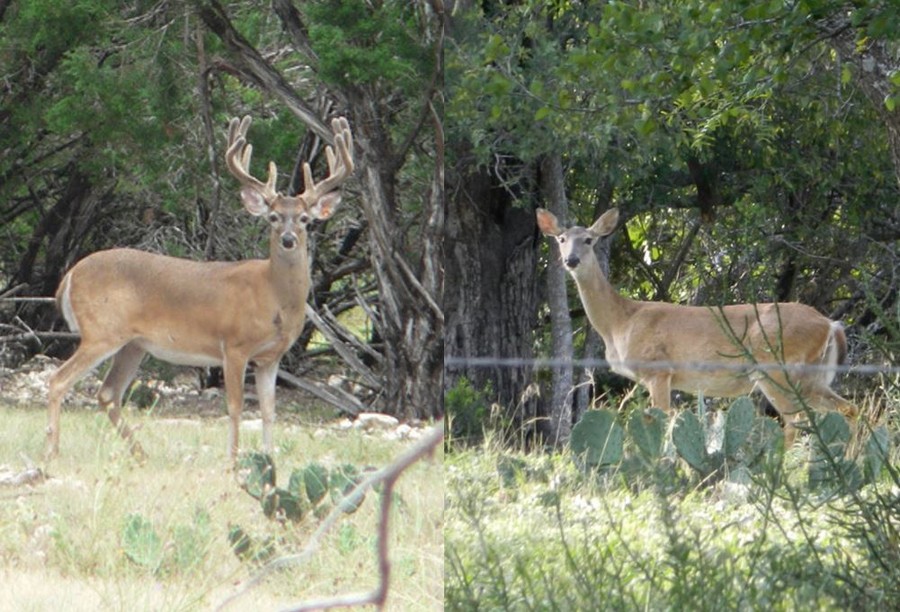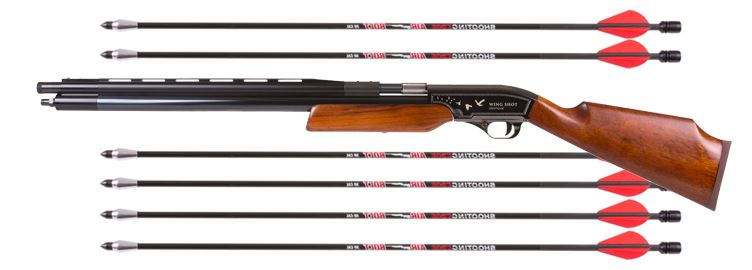Air Guns: More Options for Deer
Hunters can now add big-bore pneumatic (air) guns to the list of legal means and methods for deer hunting in Texas. Over the past few years, states across the US, including Texas, have been expanding the options available to hunters (think crossbows and suppressors). This expansion is the result of innovative, improved technology that is able to demonstrate success in the field.
Without a doubt, any regulation that changes takes someone lobbying for things to be different. I’m all for change so long as those changes are positive and big-bore, pre-charged air rifles look to be highly effective on deer and other big game species.
Air Gun Regulations in Texas
Beginning this fall, hunters in Texas will be able to use air guns and arrow guns that meet criteria established under new rules adopted by the Texas Parks and Wildlife Commission. The regulations create a new category of legal means for hunting deer and other wildlife in Texas defined as pre-charged pneumatic devices.
Unlike pellet guns and traditional air rifles that can be charged manually or with an attached CO2 cartridge, pre-charged pneumatic air guns and arrow guns are those weapons for which an unignited compressed gas propellant is supplied or introduced from a detached source.
Air Gun Requirements for Hunting in Texas
The TPW Commission decision follows months of scrutiny to avoid creating undue risks of wounding of wildlife from pneumatic weaponry. These devices must meet minimum standards of ballistic efficacy.
Minimum ballistic specifications of pre-charged pneumatics approved by the Commission for hunting alligators, big game and turkeys are: .30 caliber bullets weighing at least 150 grains powered by an unignited compressed gas propellant charge capable of attaining a muzzle velocity of at least 800 feet per second (fps) OR any bullet weight and muzzle velocity combination that produces at least 215 foot pounds of energy.
For furbearers, pre-charged pneumatics must be at least .30 caliber. For squirrels, chachalaca, quail and pheasant an air rifle does not need to be a pre-charged pneumatic, but it must be able to propel a minimum .177 caliber projectile at least 600 fps.
In addition to minimum standards for pre-charged pneumatic devices, the Commission adopted provisions that hunter education certification requirements be met in order to hunt any wildlife resource.

Pneumatic Guns for Hunting
At least 10 other states permit the use of pneumatic devices for hunting big game, and all but three states allow their use for hunting certain other wildlife species. Their use in Texas previously was limited to hunting anything other than game animals (except squirrels), game birds, alligators, and furbearers.
The new rules will take effect Sept. 29, 2018. Additional information on the use of air guns and arrow guns is available online. Update: Read the new Texas regulations on these guns at the end of this article.
Air Gun History: A Tell of Technology
Source: “Technology seldom sits still for long. While air guns have been around for hundreds of years, they have been relegated for the past several decades as paper-punchers and quiet pest eliminators. But when we look back in history, this was not always the case. Every book of American History detailed (or should detail) the Louis and Clark Expedition.
As they were traveling through parts unknown with limited resources, they had to be smart about a method of safely fending off attacks and harvesting game for food. Muzzleloading rifles and muskets of the time were slow and cumbersome to load. Slow, but effective, these black powder rifles and muskets need to keep the powder dry in order to function.

The expedition called for a considerable amount of boat travel so they opted to include an air rifle that was made in Italy. The .46 caliber Girandoni air rifle accompanied Louis and Clark on their journey to explore the Louisiana Purchase. Not only was this heavy hitting PCP capable of launching a 210 grain projectile with considerable force, it was also a repeater.
But using a high pressure air rifle does come with some downsides. They tend to be more complex than firearm counterparts and require some physical effort to charge the air reservoir with the high pressure needed to launch a projectile with the force needed to humanely dispatch larger game. Thus, the concept for big bore air guns was put on the back burner.
Technology has recently caught up with the concept. Air gun manufacturers have started making air guns that are bigger than the popular .177 and .22 calibers that have been available for decades. The first forays into big bore air rifles were nothing more than pellet rifles with larger barrels. These air rifles generated much more power than their spring powered counterparts, but the muzzle energy was still not in the large game territory.
Each successive year led to the envelope being pushed father in terms of muzzle energy. The bores grew in diameter. Projectiles grew in mass. And velocities began to climb. This meant that a shooter using air as a propellant was able to launch a heavy (by air rifle standards) projectile with enough muzzle energy to dispatch large game species in a humane way.
Not to mention that charging the air tanks of these big bore rifles became cheaper with portable high-pressure electric pumps. Technology caught up with the concept.”
Air Guns for Deer Hunting
There are a couple of aspects of big-bore air rifles that will make them attractive to deer hunters. The novelty of hunting deer with an air gun is enough to get many hunters interested in slinging it across their shoulder and heading into the field, but another factor that makes me want to take a closer look is the reduced sound/noise level that these guns emit.
Very rarely will I shoot a rifle without ear/hearing protection anymore. It only happens out of perceived necessity when in the field shooting deer or hogs. Even then, there is usually more than enough time to ensure that my hearing protection is on prior to squeezing the trigger.

Time catches up with all of us though. Once we notice our hearing tapering off, it’s time to wise up and be more cognizant about how we approach some of our activities. In my research on big-bore, pre-charged air rifles, it appears a number of them are fairly quiet.
Many shoot the large bullets used for deer hunting at subsonic velocities, so much quieter than a standard deer hunting rifle. This is attractive to me, but so is a suppressor. Both situations, however, limit maximum range to about 100 yards.
Each hunter considering a big-bore air gun will have to evaluate its utility for their hunting situation. Reduced sound and recoil are going to be quite attractive to many. Reduced range is going to be be a non-starter with other hunters, but not out of the question for those deer hunting in areas with limited visibility. It’s going to be interesting to see if air guns catch on. Would you hunt deer with one?
UPDATE 8/29/18: Air Guns, Arrow Guns Regulations
TPWD Means and Methods Definitions:
- Arrow gun: a device that fires an arrow or bolt solely by the use of unignited compressed gas as the propellant.
- Air gun: a device that fires a bullet solely by the use of unignited compressed gas as the propellant.
- Pre-charged pneumatic: an air gun or arrow gun for which the propellant is supplied or introduced by means of a source that is physically separate from the air gun or arrow gun.

Alligator, game animals, furbearers, squirrels, and non-migratory game birds (except Eastern Turkey) may be hunted with air guns and arrow guns provided:
- Alligators, big horn sheep, javelina, mule deer, white-tailed deer, and turkey may be taken only with pre-charged pneumatic arrow guns, or air guns that fire a projectile of at least 30 caliber in diameter and at least 150 grains in weight with a minimum muzzle velocity of 800 feet per second or any combination of bullet weight and muzzle velocity that produces muzzle energy of at least 215 foot pounds of energy.
- Squirrels, pheasant, quail, and chachalaca may be hunted with air guns that fire a projectile of at least .177 caliber (4.5mm) in diameter producing a muzzle velocity of at least 600 feet per second.
- Arrows or bolts used with an arrow gun must conform to the same standards for projectiles for archery.
- Arrow guns may not be used to hunt deer or turkey during archery season.
How much more unethical can you get?
Charles, what exactly are you concerned with?
I think air guns are a great option for deer hunting. Technology has obviously come a long way. Just another arrow, so to speak, in the hunter’s quiver.